Ministry of Health and Family Welfare
National Health Accounts Estimates for India (2019-20) released
Share of Out-of-Pocket Expenditure (OOPE) in Total Health Expenditure declines from 62.6% in 2014-15 to 47.1% in 2019-20
Government Health Expenditure’s share in country’s total GDP increases from 1.13% (2014-15) to 1.35% (2019-20)
Share of Government Health Expenditure in Total Health Expenditure increases from 29% (2014-15) to 41.4% (2019-20)
Per capita Government spending on healthcare doubles
State governments urged to move ahead in healthcare spending as percentage of their total budget: Dr. Vinod K Paul
प्रविष्टि तिथि:
25 APR 2023 7:36PM by PIB Delhi
“Through National Health Accounts Estimates report we can see that indicators like Out-of-pocket expenditure (OOPE) reduction are going hand in hand with increased public spending in healthcare. Thus, showcasing the right trajectory country is taking towards achieving milestones of Universal Health Coverage”, this was stated by Dr. Vinod K. Paul, Member (Health) of NITI Aayog as he launched National Health Accounts (NHA) Estimates for India for 2019-20 in the presence of Shri Rajesh Bhushan, Secretary, Union Ministry of Health & Family Welfare.
Highlighting the efforts of the government towards public investments in the health sector, findings from National Health Accounts (NHA) show that various indicators have demonstrated an encouraging trend on a sustained basis.
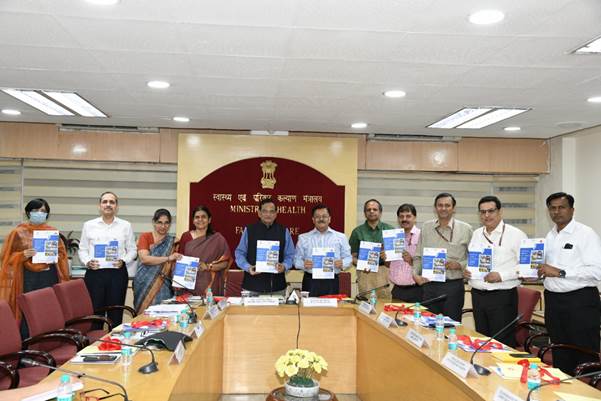
While congratulating everyone on NHA Estimates report launch, Dr. V K Paul, Member (Health) NITI Aayog stated that “Government is ensuring that healthcare services that are required, be made readily available and accessible to the citizens without financial hardships.” Highlighting investments in strengthening primary healthcare, Dr. Paul said that “report highlights the increased public spending in primary healthcare, which is in line with National Health policy 2017 where it states that two-thirds of public health spending must be in Primary Health systems. This is also a result of great developments/initiatives taken at grassroot level such as opening of over 1.6 lakh Ayushman Bharat Health and Wellness Centres (AB-HWCs) which are providing plethora of health services to the people.” He further said that primary healthcare must be prioritized as it is the fundamental base on which secondary and tertiary services can be supported efficiently.
Dr. Paul expressed his heartfelt appreciation to the teams working behind this report and noted the significance of an accurate record of data collected for an evidence-based decision making. He said that “these estimates are crucial for policymaking and comparing various indicators further aids in reflecting the progress made by the health system of the country.”
Dr. Paul also threw light on the fact that private health insurance share is also going up. He said that “this shows a sign of maturity for a country in terms of insurance arena as those who can afford, will afford it from private players too. This complements the government system of primary, secondary and tertiary care.”
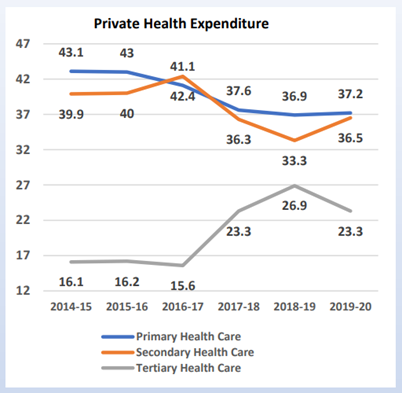
Figure 1: Share of Private Health Expenditure at various levels (%)
The NHA estimates for 2019-20 which is seventh in the series of reports released annually, clearly show that government expenditure for healthcare continues to be the priority.
The share of Out-of-Pocket Expenditure (OOPE) in total Health Expenditure (THE) declined from 62.6% to 47.1%. The continuous decline in the OOPE in the overall health spending show progress towards ensuring financial protection and Universal Health Coverage for citizens.
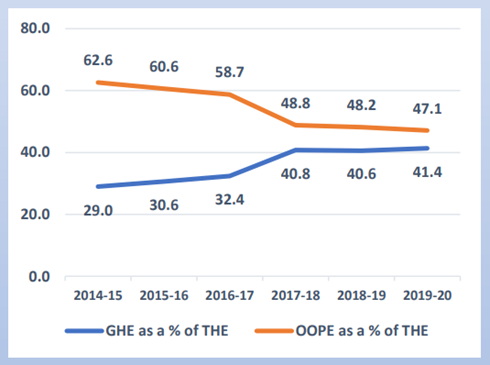
Figure 2: Government Health Expenditure and Out-of-pocket expenditure as % of Total Health Expenditure (%)
During this period, the share of Government Health Expenditure (GHE) in the overall GDP of the country has increased from 1.13% in 2014-15 to 1.35% in 2019-20.
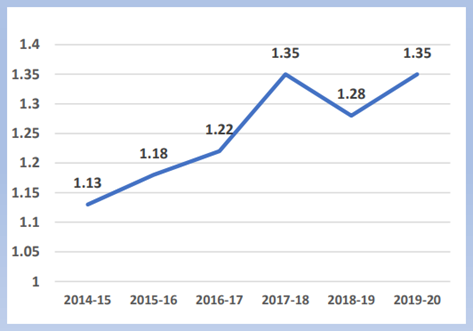
Figure 3: Government Health Expenditure as % of GDP
In per capita terms, GHE has doubled from Rs. 1,108 to Rs. 2,014 between 2014-15 to 2019-20. The government spending on health between 2018-19 and 2019-20 increased by 12%, more than double the growth rate between 2017-18 and 2018-19 which was at 5%.
Additionally, in General Government Expenditure (GGE), the share of health sector spending has steadily increased from 3.94% to 5.02% between 2014-15 and 2019-20. This clearly indicates that healthcare has been the priority for public investment in the country.
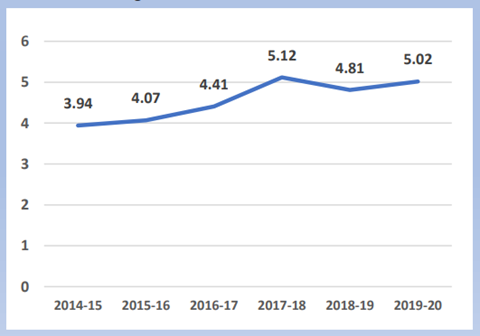
Figure 4: Government Health Expenditure as % of General Government Expenditure (GGE)
The increase in government spending on health has an important implication for the reduction of financial hardship endured by households. In the Total Health Expenditure (THE) of the country between 2014-15 and 2019-20, the share of GHE has increased from 29% to 41.4%.
The share of primary healthcare in Current Government Health Expenditure (CGHE) has increased from 51.3% in 2014-15 to 55.9% in 2019-20. The increased focus on primary healthcare reinforces the government’s decisions to prioritize primary healthcare in the country.
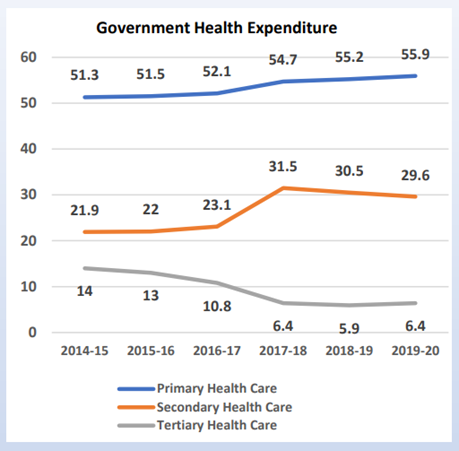
Figure 5: Share of Primary Health Care in Current Government Health Expenditure (%)
Another positive trend in the country’s health financing space is the increase in Social Security Expenditure (SSE) on healthcare. This increase in social security has a direct impact on reducing out-of-pocket payments. A robust social security mechanism ensures that individuals will not face financial hardship and the risk of poverty as a consequence of accessing essential healthcare services.
The share of SSE on health, which includes government-funded health insurance, medical reimbursement to government employees, and social health insurance programs, in THE, has increased from 5.7% in 2014-15 to 9.3% in 2019-20.
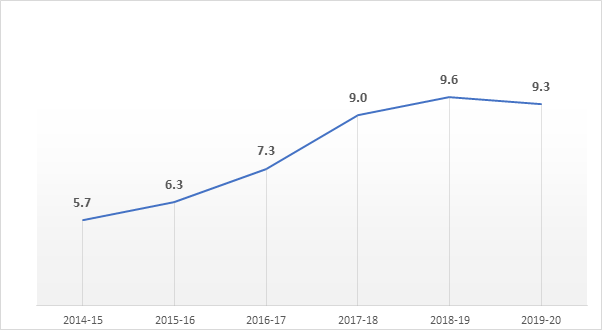
Figure 6: Social Security Expenditure on Health as % of Total Health Expenditure (%)
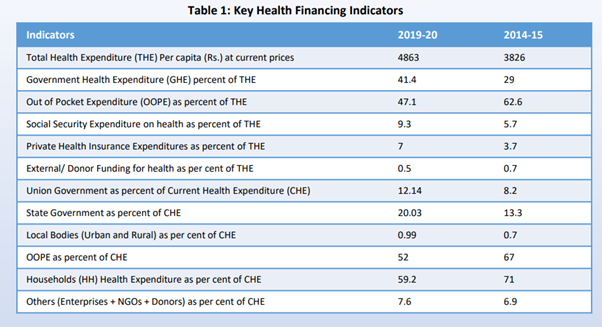
While thanking the huge participation of state officials and other stakeholders, Dr. Paul also highlighted the persistent efforts in increasing total public spending on health at state level. He thus, urged the state governments to move ahead in healthcare spending as percentage of their total budget to about 8% which is currently 4-5% for many states. He further added that “this spending must be in line with the bigger picture of benefiting the citizens”.
Union Health Secretary Shri Rajesh Bhushan highlighted four important indicators i.e. reduced out of pocket expenditure due to which people are now spending less from their pockets.” “This is also a consequence of the increased government health spending over the years, he further stated. Shri Bhushan informed everyone about government spending through services at AB-HWCs, insurance claims etc. While highlighting that the significance of promotive and preventive health, Shri Bhushan said that “we need to persist with this trend of expenditure on primary healthcare so that promotive and preventive health, which mostly take place at primary level, can be focused upon.”
Union Health Secretary also pointed out about social security expenditure, which includes the social health insurance program, government-financed health insurance schemes, and medical reimbursements made to government employees, has drastically increased from 5% to 9.3%. “This along with other indicators taken together highlight that the burden on an individual or family due to health issues have reduced”, he added. This is a significant increase which shows that the common people of India are better equipped and better provided in terms of healthcare at their doorstep and making health more accessible.
About National Health Account (NHA) estimates:
The National Health Account (NHA) estimates for India 2019-20 is the seventh consecutive NHA estimates report prepared by NHSRC, designated as National Health Accounts Technical Secretariat (NHATS) in 2014 by the Union Health Ministry. The NHA estimates are prepared by using an accounting framework based on the internationally accepted standard of System of Health Accounts, 2011, developed by the World Health Organization (WHO).
With the present estimate of NHA, India now has a continuous series of NHA estimates for the country, from 2013-14 to 2019-20. These estimates are not only comparable internationally, but also enable the policymakers to monitor the progress in different health financing indicators of the country.
The report can be accessed here: https://nhsrcindia.org/national-health-accounts-records
The launch event saw the presence of Shri S Gopalakrishnan, Special Secretary, Shri Jaideep Kumar Mishra, AS&FA, Ms. Roli Singh, AS, Shri Sukhram Meena, Director General, MoHFW, Shri Vishal Chauhan, Joint Secretary, Ms. Indrani Kaushal, Economic Advisor, Maj Gen (Prof) Atul Kotwal, Executive Director, NHSRC. NHM directors at state level and senior officials from states were also present virtually.
****
MV
HFW/National Health Estimates 2019-20 report launch/25thApril2023/2
(रिलीज़ आईडी: 1919582)
आगंतुक पटल : 24805